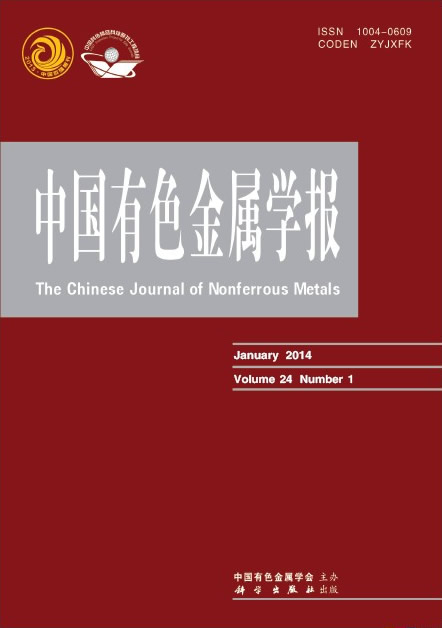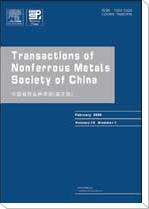中国有色金属学报(英文版)
Transactions of Nonferrous Metals Society of China
| Vol. 35 No. 9 September 2025 |
(1. Key Laboratory of Superlight Materials and Surface Technology, Ministry of Education, Harbin Engineering University, Harbin 150001, China;
2. CNOOC Research Institute Co., Ltd., Beijing 100028, China;
3. Department of Mechanical and Electrical Engineering, Qingdao University of Technology, Linyi 273400, China)
Abstract:In order to develop a marine engineering material with excellent mechanical properties and corrosion resistance, a novel non-equiatomic Co1.5CrFeNi1.5Ti0.6 high-entropy alloy (HEA) was fabricated through mechanical alloying and spark plasma sintering. The results revealed that the sintering temperature significantly affected the microstructure and phase composition of the HEA owing to the diffusion rate, homogenization, and sluggish diffusion effect of metal atoms. At sintering temperatures below 1050 °C, HEA mainly consisted of face-centered cubic (FCC), Ni3Ti (ε), Ni2.67Ti1.33 (R), and Fe-Cr (σ) phases. The microstructure of alloy comprised coarse dendritic crystals, whose content and size gradually decreased with increasing sintering temperature. However, the HEA sintered above 1100 °C contained only fine equiaxed crystals. HEA sintered at 1100 °C featured only the FCC solid solution, while the ε-phase precipitated at temperatures above 1150 °C. At a sintering temperature of 1050 °C, the alloy microstructure consisted of short rod-like dendrites and fine equiaxed crystals. This alloy achieved the highest yield strength of 1198.71 MPa owing to the effects of precipitation strengthening and grain boundary strengthening. Meanwhile, HEA sintered above 1050 °C exhibited significantly improved corrosion resistance. Considering the microstructure, mechanical, and corrosion properties, 1050 °C was identified as the optimal sintering temperature for Co1.5CrFeNi1.5Ti0.6 HEA.
Key words: Co1.5CrFeNi1.5Ti0.6 high-entropy alloy; corrosion resistance; microstructure evolution; sintering temperature; strengthening mechanism


